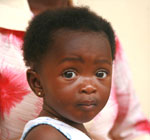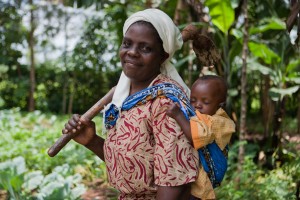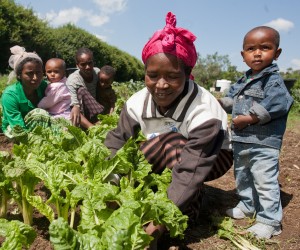
USAID's Infant & Young Child Nutrition Project
Bringing women’s and children’s nutrition to the forefront of agriculture
 Renewed global interest and investment in agriculture and food security has provided a promising context for creating programs that not only boost production and incomes, but improve nutrition—particularly for women and children.
Renewed global interest and investment in agriculture and food security has provided a promising context for creating programs that not only boost production and incomes, but improve nutrition—particularly for women and children.
Although agricultural projects can have a significant effect on household food security and nutritional well-being, some offer little or no nutritional advantages or can be harmful for women, children, and other nutritionally vulnerable populations. Agricultural program designers have lacked guidance and practical tools to assist them with developing programs that are sensitive to the nutritional concerns of vulnerable women and children.
The IYCN Project paved the way for transformations in how program designers think about and develop agriculture and food security initiatives. We created valuable materials and tools that can help to guide and influence program designers and promoted them in relevant institutions. By collaborating with governments and other stakeholders to orient agricultural programming or better nutritional outcomes, we forged critical links between agriculture and nutrition programs.
Because women’s diets can serve as an important indicator for the effectiveness of food security programs, we also elevated the importance of improving maternal diets. All of this work focused on maximizing nutritional benefits for the most nutritionally vulnerable groups.
Integrating nutrition and agriculture interventions in Ethiopia
 Through a unique partnership with the US Agency for International Development’s Urban Gardens Program, we trained 109 agriculture extension workers to incorporate nutrition education into existing activities aiming to help families generate income from their gardens. Based on findings from our qualitative assessment of current feeding practices, the project created behavior-focused training materials and conducted five-day training workshops for the extension workers. As a result, they are now offering nutrition counseling, conducting cooking demonstrations using nutritious foods from household gardens, and making appropriate referrals for nutrition services.
Through a unique partnership with the US Agency for International Development’s Urban Gardens Program, we trained 109 agriculture extension workers to incorporate nutrition education into existing activities aiming to help families generate income from their gardens. Based on findings from our qualitative assessment of current feeding practices, the project created behavior-focused training materials and conducted five-day training workshops for the extension workers. As a result, they are now offering nutrition counseling, conducting cooking demonstrations using nutritious foods from household gardens, and making appropriate referrals for nutrition services.
Highlights
- The project developed and distributed more than 7,000 copies of four resources that are helping agriculture project designers around the world address the nutrition concerns of women, children, and other vulnerable groups. The World Bank has endorsed the resources, and India’s National Rural Livelihoods Mission as well as Nigeria’s National Programme for Food Security have started adapting the tools for national use.
- The project trained nearly 500 Ministry of Agriculture workers to promote improved complementary feeding in Lesotho.
- In Ethiopia, IYCN trained 109 agriculture extension workers to integrate nutrition education into existing agriculture activities.
- IYCN elevated the importance of improving maternal diets as part of food security interventions by publishing a technical brief and sharing findings from an analysis of Demographic and Health Survey data during events in Washington, DC, and Rome. Findings revealed that in Cambodia, Ghana, and Haiti, poor nutrient intakes are common among mothers in resource-poor settings and that the diets of mothers are strongly associated with the diets of their children.
Photo: PATH/Evelyn Hockstein

